It’s time to have a talk about the clipboard of the Wing42 Boeing 247D. In previous installments of the Microsoft Flight Simulator, it was common for 3rd party aircraft developers to utilize 2D panels as a user interface for any sim-related interactions. An example for that is the payload manager of our P3D/FSX Lockheed Vega. MSFS completely removed 2D panels with no alternative way for us to generate a custom user interface.
Before we dive into the fascinating world of clipboards, let me put a disclaimer: all the features shown here a still subject to change! I think that they're great additions to the add-on, but it's always possible that things change until the final release.
Our solution to the problem is a clipboard that is integrated in the 3d model and runs a wasm and nanovg based „instrument“. Because of the complexity of the add-on we needed to a multiple pages to the clipboard.
Performance and Limitations page

The „Performance and Limitations“ page is a quick reference sheet that will help you to operate the aircraft within its specifications. Here you’ll find the manifold pressure and rpm for the various stages of the flight and some important information for single-engine operation.
Payload, weight and balance page
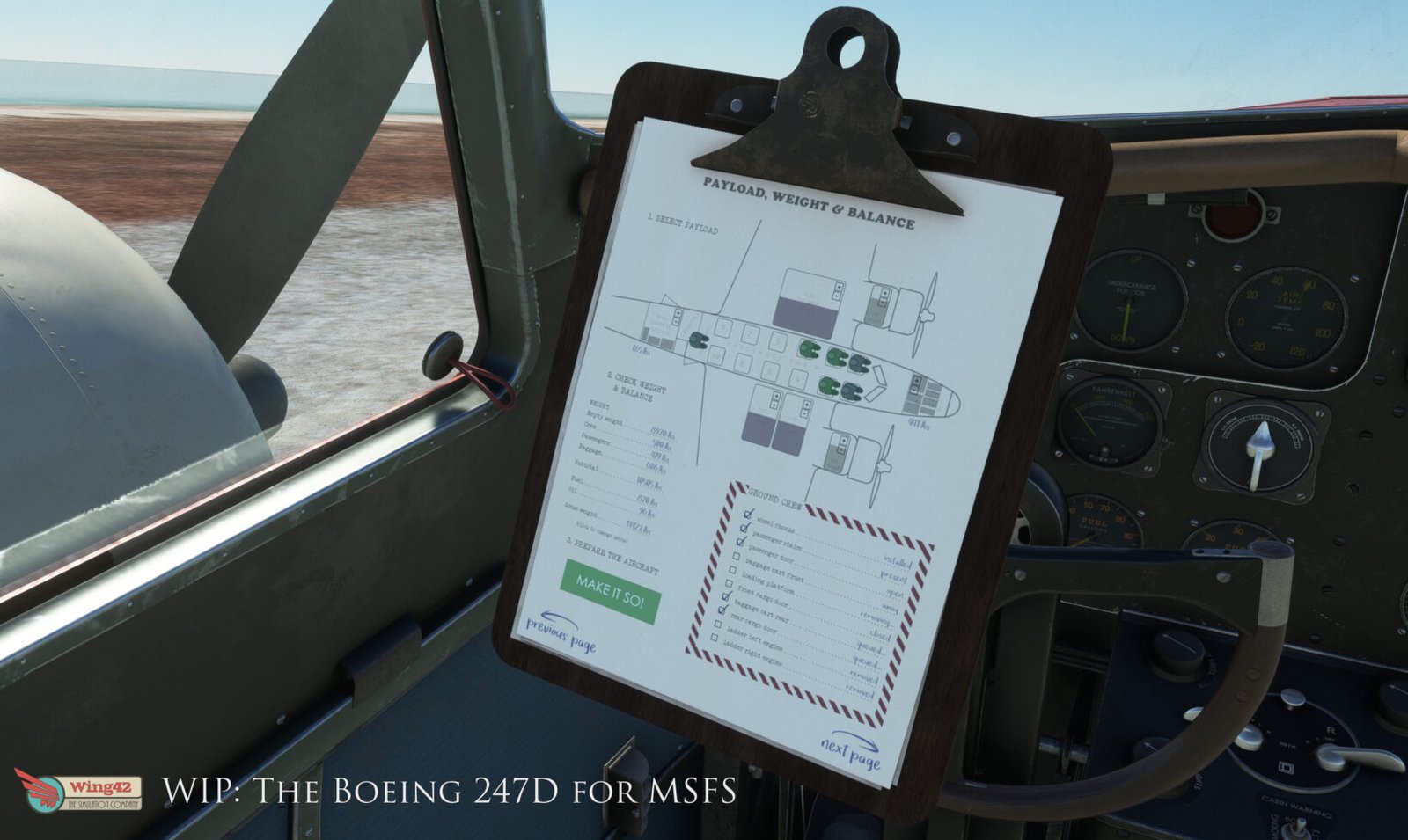
The payload, weight and balance page is how you can interact with your virtual ground crew to prepare the aircraft for a flight. You can assign various jobs to the „rampies“ and give orders of how to load up the aircraft. Jobs can range from just bringing a piece of ground equipment, to more complex ones that involve multiple tasks.
The workflow to get your aircraft ready is rather straight-forward: you select how many passengers and how much cargo you’d like to carry. You set a fill level for the three fuel tanks and make sure to top up the oil tank. All this is done directly on the clipboard, and you can observe how the weight will be affected by your changes.
By clicking on the „MAKE IT SO“ button, your ground crew will spring to action! All the various tasks are assigned to their work-queue and they will perform one task at a time, in a logical order. So while Jack, your mechanic, is filling up the oil tank, Heinrich will get the baggage cart, open the rear hatch and load the luggage into the aircraft, while Howard, your second rampie, is getting the passengers ready to board. He will bring the ladder and open the cabin door and then help the passengers finding their place.
Engine startup page
The engine start-up is a bit tricky on those old aircraft, and we’re doing our best to imitate that behavior. The Boeing 247 has one added difficulty, which is that the controls for the engine starter are located on the outboard side of the engine nacelles.

Image of the starter as used in the Boeing 247, from the Eclipse manual. 
Starter in the 3d model of the Wing42 Boeing 247D 
The Wasp engines are started with pure muscle-power!
The starters used on this aircraft, are Eclipse inertia starters. They consist of a flywheel, mounted on the backside of the engine, with a clutch connecting the flywheel to the crankshaft. To save weight, Boeing decided to skip the electric motor that sometimes comes with this sort of installation. Instead, a hand-crank was utilised to spin up the flywheel, before it got meshed with the crankshaft to turn over the engine.

In the original aircraft, the ground crew would be tasked to operate the starter on command of the captain. These commands can be communicated using the engine start-up page of the clipboard. The assisted start option allows you to instruct your mechanic to spin up the flywheel and once you’re done with the preparations in the cockpit, you can signal him to pull the clutch of the starter to mesh the flywheel with the crankshaft. Hopefully, she starts up right away!
Additionally, we provided the option for you to experience this engine start yourself. If you chose this manual start option, you are required to jump outside and operate both the hand-crank and the clutch yourself.
Final thoughts
I hope this blog post illustrates not only the use of the clipboard, but also the level of detail and thought that was already put into this add-on. I’m excited to see all of you fly our beast and I hope it won’t be too long before she’s ready for you! Check out the hangar page for the Boeing 247D over here. I update the pictures every now and then to make your wait more agonizing! 😉
I still have so much to tell you, but I have to get back to work! See you around!
– Otmar

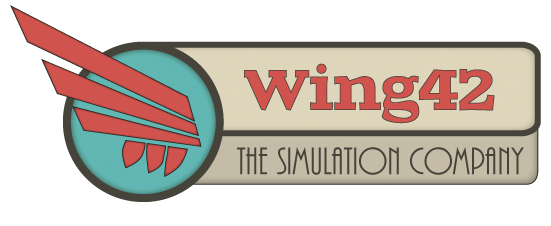


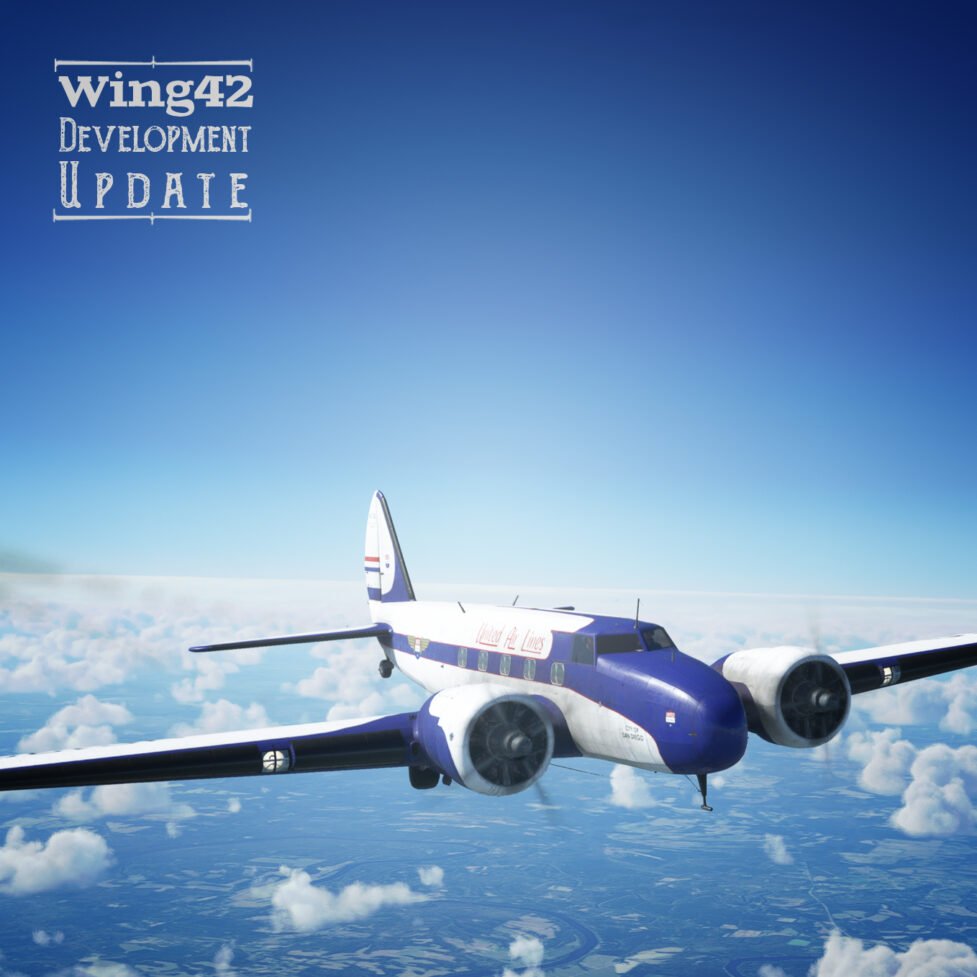


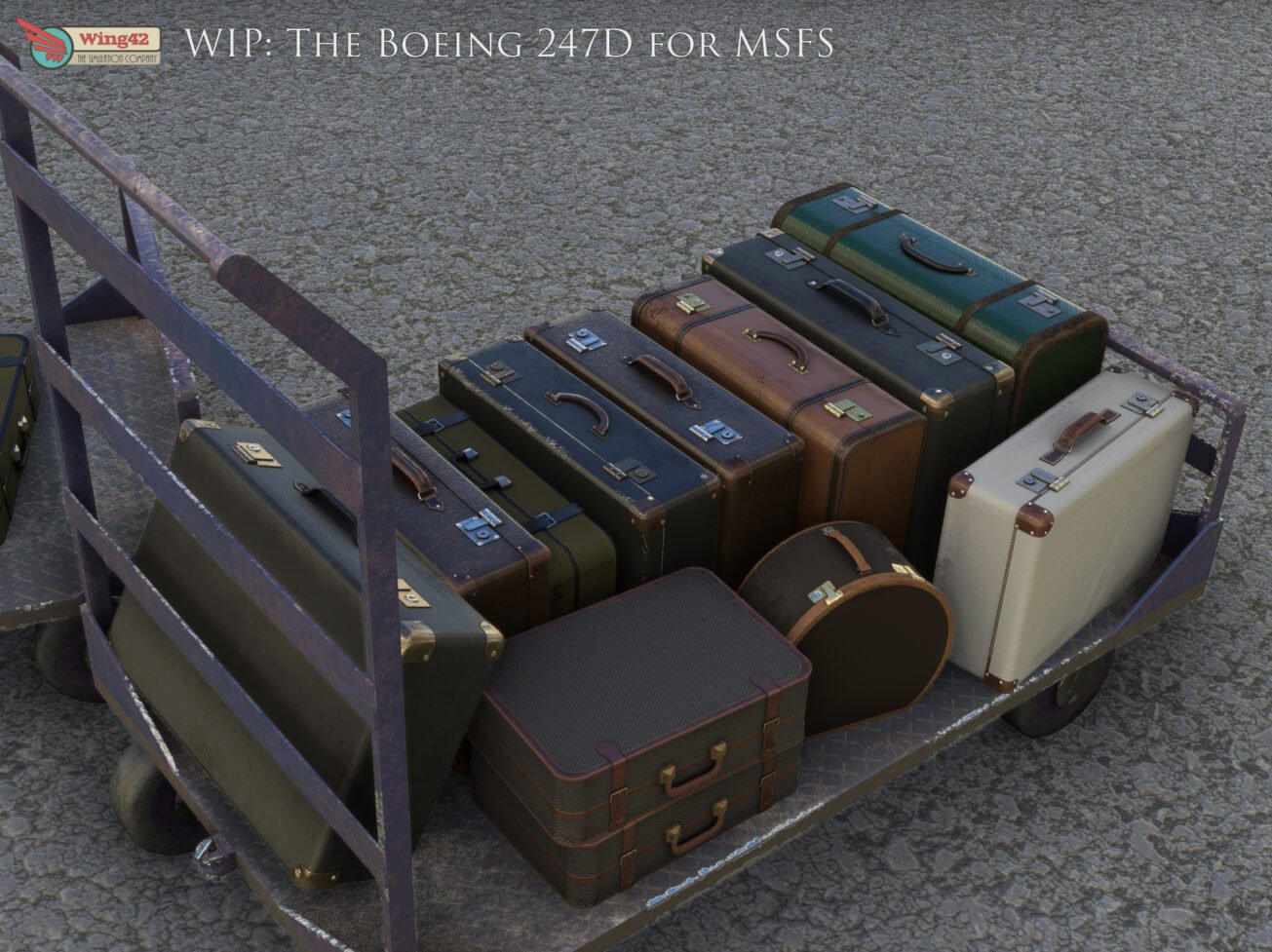
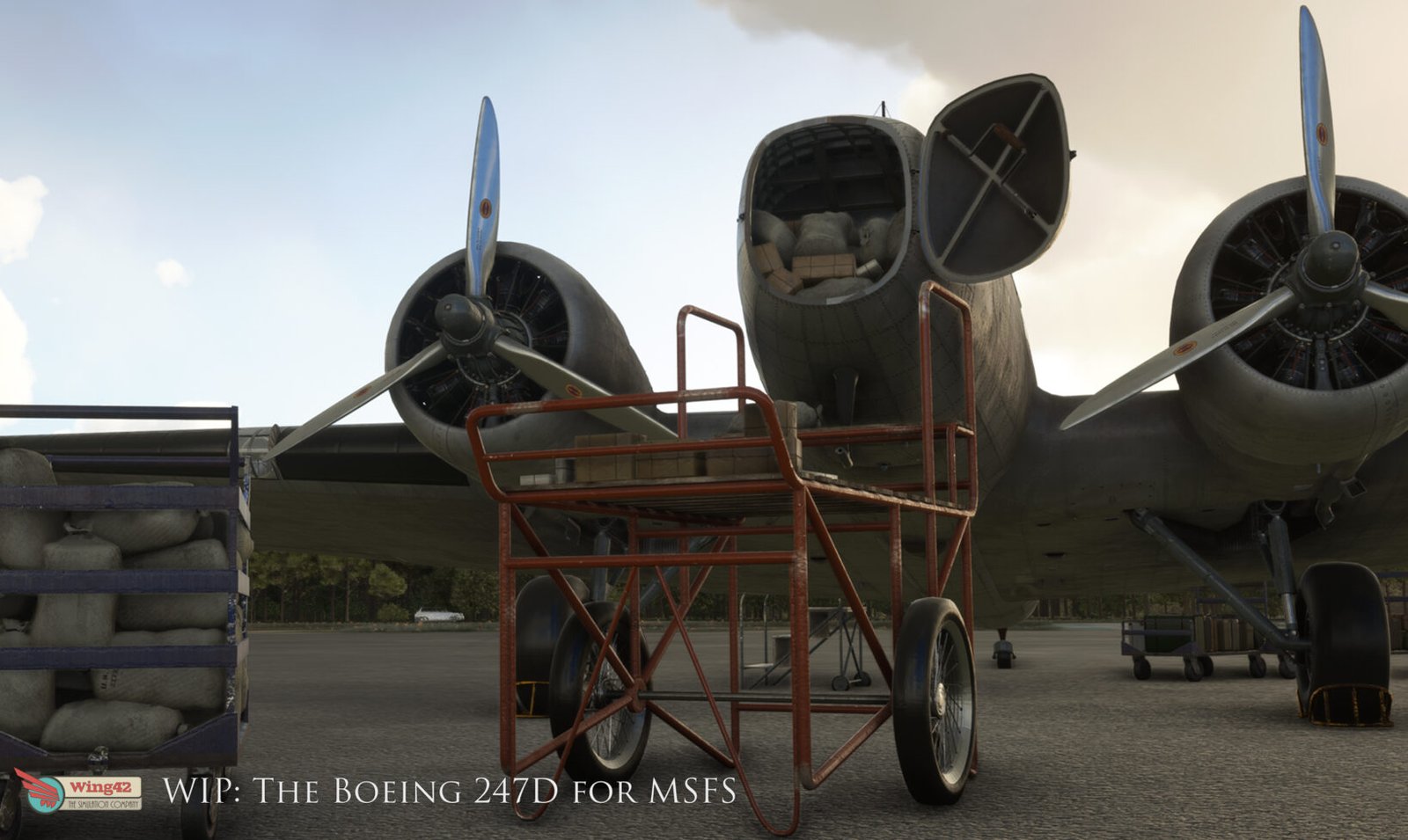
 Microsoft Flight Simulator Add-ons
Microsoft Flight Simulator Add-ons Flight Simulator X Add-ons
Flight Simulator X Add-ons